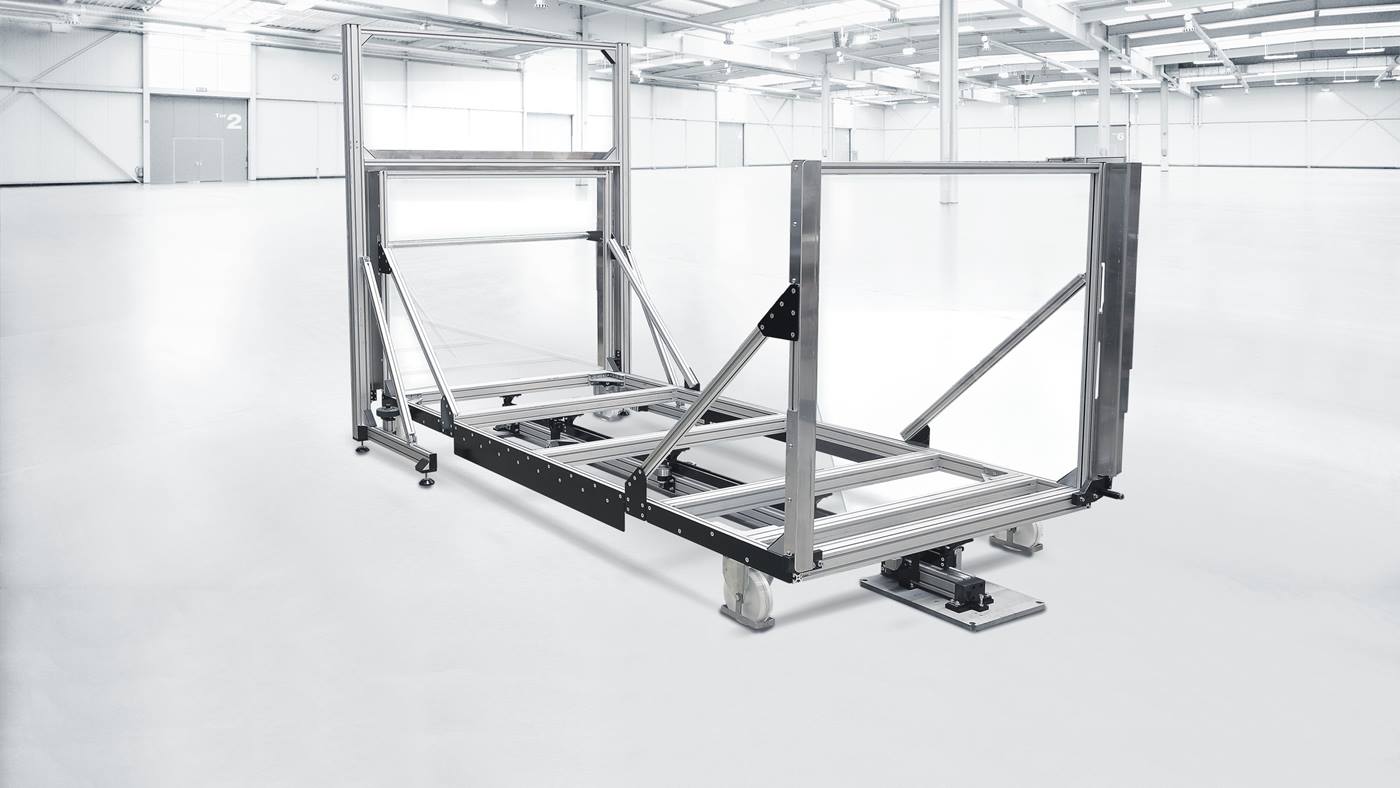How the KS CycleMove functions
The KS CycleMove consists of three principal components:
- Frame: The tubular steel frame forms the stable and yet flexible base frame for the carriage system. It is available in different widths between 500 and 1,950 millimeters. Individual lengths can be selected between 3,250 and 6,250 millimeters. Up to four pairs of tracks can be integrated here, depending on requirements.
- Tracks: The supply and return conveyors ensure that the carriage and components are transported safely. The tracks contain components that are relevant to the system. Chiefly, these are a soft pad for cushioning the carriages, the control sensors of the CycleMove as well as the interlock at the end of the conveyor.
- Carriage: The means of transport for the feed system have a patented, integrated brake. This means the carriages run reliably at a constant speed – irrespective of the conveyor length and the weight of the components.


